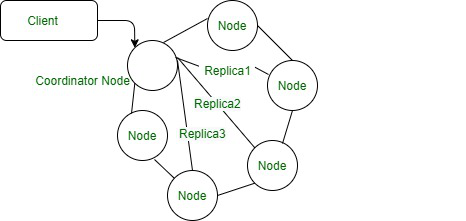Relational Overview Vs Cassandra Overview
Last Updated :
09 Jul, 2020
In this article, we are going to discuss Cassandra and Relational overview in which we will cover and able to learn how Cassandra differentiates the Relational overview. Let’s discuss one by one.
1. Relational Overview :
In Relational Database, you can handle and manage Small, Medium Data such that Postgres, MySQL, Oracle, etc. is fine and It also supports hundreds of concurrent users and one of the most important properties in a relational database is the ACID property which makes us feel proud.
Limitation for handling Big data
- In Relational Overview Data scales vertically which take more hardware and storage that’s why it is expensive for handling Big Data.
- In a Relational database, Query is a lengthy task for managing data.
- In Relational database managing schema of a database is a huge burden.
- The relational database has master-slave architecture in which if the master fail over then who will be responsible for that.
- High Availability is not really if any node goes down.
- Downtime is frequent in a relational database and multi Dc is a mess.
- Manual resharding and re-balancing are hard and every moving part makes the system more complex in a relational database.
Let’s see the Master-slave architecture.

Figure – Server-Client architecture Overview
Now, you will see here Cassandra Overview.
2. Cassandra Overview :
It is NoSQL database that has a peer to peer architecture which means there is no master and there is no slave or more specifically can say it is the master-less database.

Figure – Cassandra peer to peer architecture
Solution for handling Big Data.
- In Cassandra, peer to peer architecture which means there is no master. In terms of Scalability, Cassandra is one of the databases which automatically configured the node when the number of users will increase.
- As you can see in the diagram, It has 3 replica means has 3 copies of data that is for high availability.
- Fault tolerance is also the key feature in Cassandra, which gives you zero downtime which directly implies high availability.
Note –
Cassandra is not replacing the relational database. Relational Database is also useful for Medium Scale Data and also can handle Big data as well but If users want scalability, High availability, fault-tolerant system and have big data so, you can go for Cassandra. It depends on the user requirement and data model. So choose wisely.
Like Article
Suggest improvement
Share your thoughts in the comments
Please Login to comment...